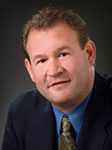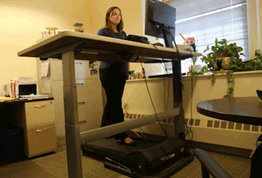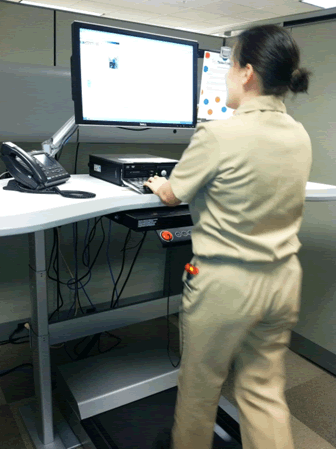TWH™ in Action!
Volume 2 Number 2 April 2013

In this issue:
- Managers’ Buzz
- TOTAL WORKER HEALTH™ Exclusive
- Promising Practices for TOTAL WORKER HEALTH™
- Updates from NIOSH Centers of Excellence to Promote a Healthier Workforce
- TOTAL WORKER HEALTH™ Program for NIOSH Employees
- News from our Partners
- New Initiatives and Resources
- TWH™ Fast Facts
- Upcoming Conferences, Webinars and Trainings in Support of NIOSH TOTAL WORKER HEALTH™
Managers’ Buzz
BY:ANITA L. SCHILL, PhD, MPH, MA AND L. CASEY CHOSEWOOD, MD
Perhaps the greatest influence on the overall safety, health and well-being of working people and their families is the quality of the physical and psychosocial work environment. For many, a “good job” equates to economic security, increased opportunities to enhance the quality of life, family stability, access to healthcare, and other determinants of greater health and a more satisfying life. Creating healthier jobs and workplaces that include opportunities for advancing individual and family health are a public health priority. They are essential components for a globally-competitive workforce and a prosperous economy.
On Wednesday, April 3, the Total Worker Health® (TWH®) Program participated in National Public Health Week. We focused attention on ways to create healthier workplaces and how to demonstrate the return on investment created by the public health approach. Our activities included posting information about the upcoming conference, Work Stress and Health 2013: Protecting and Promoting Total Worker Health®on NIOSH Facebook, mention of TWH® on the NIOSH Science Blog, and numerous tweets from @NIOSH_TWH® highlighting ways to create safer and healthier workplaces, including features from our TWH® Program for NIOSH Employees.
In this issue of TWH® in Action! we continue to focus on creating environments that promote healthier jobs and healthier workplaces by highlighting the work being done in NIOSH and by our partners to advance the knowledge and practice of TWH®. In Total Worker Health® Exclusive, Dr. Tom Cunningham shares his insights on initial conversations between small business owners and NIOSH researchers as they discuss the concept of TWH®. He provides valuable lessons learned on engaging wellness practitioners and occupational safety and health professionals in discussions with the business community.

Speaking of the business community, this issue’s Promising Practices for Total Worker Health®, features details on how two award-winning manufacturers are successfully preventing hearing loss in their workplaces and their communities. These companies have fully embraced the TWH® concept and are leaders in efforts to extend hearing loss prevention beyond the borders of the workplace. They recognize the value of investing in youth, engaging the community, and changing the culture of hearing loss prevention.
Culture change sometimes is as simple as making the healthy choice the easy choice. Read about how a private, not-for-profit healthcare provider in Colorado is supporting healthier food choices for their employees, patients and their families by offering low cost options in News from our Partners. You’ll be amazed to learn how veggie pizza emerged as the leader in improving the food environment.

Internally, NIOSH continues its own TWH® efforts for employees with the HealthiestNIOSH Program. Recently, NIOSH launched two pilot projects to explore use of sit-stand and walking work-stations by our employees. The goals of both pilots are to reduce the overall level of sedentary work of participants, give workers more control over the condition and the nature of their work environments, and improve the overall health and well-being of participants. Read more about these pilot programs in a feature section, Total Worker Health® Program for NIOSH Employees.
As always, we hope this newsletter inspires you to become a Total Worker Health® advocate. Share your comments and stories about TWH® in Action! with us on Twitter (@NIOSH_TWH®), on the NIOSH Total Worker Health® LinkedIn Group, or send us an email at TWH@cdc.gov.
Total Worker Health® Exclusive
The light bulb moment: first conversation about TWH®
BY:THOMAS R. CUNNINGHAM, PH.D., BEHAVIORAL SCIENTIST, NIOSH
My colleague, Ray Sinclair, was recently out for breakfast with a couple of guys he knows in the construction industry. Full disclosure: Ray ate pancakes and bacon. However questionable the menu choices, the meal turned out to be a valuable lesson about the diffusion of the Total Worker Health® (TWH®) concept
Deep in a wide-ranging conversation about workplace safety as they ate, Ray described the idea of TWH® in basic terms as putting together workplace health and safety issues with employee health issues. When Ray (a safety and health guy) talked about workplace health promotion, a light bulb of recognition clicked on for one of the business owners. His eyes got big, and he described how he had heard something from a friend who was leaving work to go the gym, and it gave him an idea. He said “Yeeeaaah! If I could load up my weight machine in my truck and bring it in, then the guys and I could work out on it right here at the office!”
The business owner suddenly could see a link between keeping his workers safe on the job and providing them with opportunities to do something for their own personal health. He mentioned that he was somewhat concerned about his own health, and that he was trying exercise more. Although the motivating factors that were pushing him toward action on the two sides of TWH® were somewhat different, he recognized the value of taking action for health protection and health promotion in his business. The critical barrier to integrating the health promotion side into his business activities is that he had never considered the connection with traditional occupational safety and health (OSH), but once the idea of them being connected was presented, he got it right away.
Now it was Ray’s turn to learn something. Since the business owner was now excited about the Total Worker Health® concept, he asked Ray for help with putting it to practice in his business. At this point Ray was pretty excited too, so he began telling the business owners about the project he and I are conducting to learn more about how to deliver Total Worker Health® programming to small businesses. It took all of about 10 seconds for the business owner’s enthusiasm for talking with Ray to disappear.
We think there is an important lesson in this interaction. Ray’s success at that breakfast was that he helped the owner see the connection between promotion and protection. But when the owner asked for help Ray shifted to describing our project – a project that will eventually reach out to small business owners, but not until next year. At that critical point of recognition, the employer didn’t need to hear about a government project that is still months away from direct interaction with employers. He needed practical planning and implementation advice. If Ray had provided that help, he might have learned more about how to diffuse TWH® among employers and gained a long-term TWH® advocate employer.
This lesson is related to the focus of the NIOSH project, Total Worker Health® for Small Business. Ray and I are working to understand ways community organizations find value in offering TWH® resources to small businesses and how small businesses find value in using a TWH® approach. We know that the future of TWH® is dependent upon its acceptance by employers as well as the wellness program providers, insurance companies, chambers of commerce, and occupational health clinics that serve them. Each has a different perspective to offer on TWH®, and although Ray momentarily forgot, we know we need to be consistent, avid, and careful listeners to what they have to tell us. And we need to have correct and helpful information at the ready. If we are good enough listeners, we may learn how to position TWH® to maximize its adoption.
As Ray observed, simply hearing about health promotion from an OSH professional made clear the value of health promotion in the work context. Imagine the possibilities for TWH® diffusion if wellness professionals were having similar conversations where they were discussing OSH issues with employers. We know there are more people working as wellness professionals1, 2 than there are OSH professionals3. It seems that TWH® diffusion efforts would benefit significantly from health promotion and OSH professionals teaching each other their languages.
For smaller businesses, we might better promote Total Worker Health® by focusing less on “selling” the program concept, and focusing more on helping employers to have that “light bulb” moment. Occupational safety and health and workplace health promotion professionals are well-positioned to turn on those lights. It’s what comes next that’s harder but more useful to know.
References
- Bureau of Labor Statistics, U.S. Department of Labor, Occupational Outlook Handbook, 2012-13 Edition, Health Educators, on the Internet at http://www.bls.gov/ooh/community-and-social-service/health-educators.htm (visited March 26, 2013).
- Bureau of Labor Statistics, U.S. Department of Labor, Occupational Outlook Handbook, 2012-13 Edition, Fitness Trainers and Instructors, on the Internet at http://www.bls.gov/ooh/personal-care-and-service/fitness-trainers-and-instructors.htm (visited March 26, 2013).
- McAdams, M. T., Kerwin, J. J., Olivo, V. and Goksel, H. A. 2011. National assessment of the occupational safety and health workforce. 200-2000-08017, Task Order 18
Promising Practices for Total Worker Health®
In Promising Practices for Total Worker Health® we share with you examples of how employers from across the country and from a wide range of industries are taking steps to integrate both health promotion and health protection in their workplaces.
If your organization is proactively integrating health protection and health promotion to prevent injury and illness and advance the well-being of your workers, please email us at TWH@cdc.gov.
Disclaimer: The mention of organizations and commercial entities and products in this article is for illustrative purposes only and does not represent an endorsement by NIOSH, CDC or the US Department of Health and Human Services.
Totally Engaged in Hearing Loss Prevention
BY: Deanna K. Meinke, Ph.D., Associate Professor, University of Northern Colorado and Thais C. Morata, Ph.D.,Research Audiologist, NIOSH

Noise and hearing loss – with their associated implications on communication, employment opportunities, job performance, injury-risk, anxiety and quality of life – place a significant burden on society. Occupational hearing loss represents a substantial portion of all hearing impairments and is nearly always permanent. The negative consequences associated with noise exposure are not confined to the workplace or the working years. Each of us encounters hazardous sound exposures during childhood and the exposures continue throughout our lifetime, regardless of the job(s) we perform.
Noise is everywhere. The prevention of its effects requires expanding preventive initiatives to outside the workplace; it requires the integration of occupational safety and health protection with health promotion.
Two manufacturing facilities totally engaged in hearing loss prevention are the Domtar Paper Company in Kingsport, TN and the 3M manufacturing plant in Hutchinson, MN. Both plants were previous Safe-in-Sound Excellence in Hearing Loss Prevention Award® winners; Domtar Paper Company in 2009 and 3M in 2012. The Safe-in-Sound Awards® were developed by NIOSH and are awarded at the annual National Hearing Conservation Association (NHCA) conferences. The objectives of the award are to recognize organizations that document measurable achievements in hearing loss prevention and to obtain and disseminate information on their leading edge practices and real world success.
Domtar and 3M were specifically recognized with a Safe-in-Sound Excellence Award® for the comprehensive integration of their hearing loss prevention program beyond the traditional occupational work environment into recreational and community activities enjoyed by their workers, their families and their neighbors. These plants are leading examples of the effort toward “total worker hearing health” and each is investing in the hearing health of future employees. Both employers recognized the specific non-occupational noise exposures encountered by their workforce and took steps to provide training and hearing protection devices specific to the local sound hazards.
For Domtar employees “safety is not just for work”. Music is part of their Tennessee culture. Kingsport is within 300 miles of Nashville and workers and their families frequently attend community concert events and music festivals. Many employees are musicians themselves and even perform at company events, such as open houses. Domtar’s hearing conservation safety training includes educational content relative to loud music exposure and features articles in their plant safety newsletter that is not only pertinent to their workers but also to their families.

Musicians, whose day job is with Domtar, perform at local event. Photo courtesy of the Safe-in-Sound Excellence in Hearing Loss Prevention Award™
Domtar is committed to allowing workers to take hearing protection home for use during off-the-job noise exposures and to changing the “culture” of hearing loss prevention. During community musical events, Domtar supplies free hearing protection for the public. For local Habitat for Humanity construction projects, Domtar supplies hearing protection for the local building crews.
The same “total hearing health” philosophy can be found just over 1000 miles away at the 3M Hutchinson, Minnesota plant located in a rural area approximately 60 miles west of Minneapolis. The Hearing Conservation Team promotes “24-Hour Protection” by sharing information and encouraging employees to take ear plugs home to protect their hearing if they do anything “loud.” In their geographical area, hunting is a favorite sport. The Minnesota Department of Natural Resources reports 570,000 hunters are licensed annually in the state and some of these are employed at the Hutchinson 3M plant. For these workers, recreational firearm impulse noise exposure is a common occurrence whether sighting in the firearm during target shooting or hunting small and large game species. 3M Hutchinson plant health and safety personnel recognized the risk to hearing for employees who are recreational shooters and implemented a policy whereby small-orifice “Combat Arms” earplugs are stocked in the employee store and made available at minimal cost to workers and their family members. The Hutchinson plant employees receive supplemental information on the unique auditory risks of firearm noise and the performance of hearing protectors specially designed for the shooting sports in their annual Occupational Health and Safety Administration (OSHA) hearing conservation training programs. Proper insertion and adequate fitting is stressed. Awareness campaigns and reminders to workers to protect their own ears and those of their children during shooting activities are distributed each fall and spring when hunting seasons open. Caring for the ears of their youth is also reinforced when the children of 3M employees are offered summer internships/employment at the plant. These young workers are trained on all safety and health issues, including occupational and non-occupational noise exposure regardless of the job setting or potential exposure to workplace hazards. Some workers even report that they have increased their off-the-job use of hearing protection after recognizing the importance of setting a good example for their own children.

3M plant in Hutchinson, MN (~1450 workers)
Domtar and 3M have embraced “total worker hearing health”. Both award winners are leading the effort to extend hearing loss prevention beyond the workplace. These employers recognize the importance of investing in youth, engaging their communities and changing the culture of hearing loss prevention for the future. Is there a place for “total hearing health” in your workplace?
For more information on the NIOSH Safe-in-Sound Excellence in Hearing Loss Awards® or hearing loss prevention programs, contact the authors at Deanna.Meinke@unco.edu or tmorata@cdc.gov.
Updates from NIOSH Centers of Excellence to Promote a Healthier Workforce
Centers of Excellence to Promote a Healthier Workforce: Presentations at WSH2013
Poster Sessions: Friday May 17, 2013 from 8:00am – 9:30am PT
- University of Iowa Healthier Workforce Center for Excellence: A NIOSH Total Worker Health® Center for Excellence
- The Center for Promotion of Health in the New England Workplace: A NIOSH Total Worker Health® Center for Excellence
- HSPH Center for Work, Health, and Wellbeing Conceptual Framework for Total Worker Health® initiatives
- Oregon Healthy Workforce Center: A NIOSH Total Worker Health® Center of Excellence
Symposium: HSPH Center for Work, Health, and Well-Being: TWH® Initiatives in Healthcare, Construction, and Manufacturing. Saturday, May 18, 2013 from 9:45am – 11:00am PT
Symposium: Total Worker Health®: Interventions at the Oregon Healthy Workforce Center. Sunday, May 19, 2013 from 9:45am – 11:00am PT
Roundtable Session: NIOSH’s Total Worker Health® Centers of Excellence: Integrating worker protection and health promotion. Sunday, May 19, 2013 from 1:45pm – 3:00pm PT
Each Center will provide one or two specific examples of how it approaches aspects of TWH®, specifically addressing how it defines and addresses integrating protection and promotion. The Centers will describe successes and obstacles encountered in the field. During the discussion period, we will invite the audience to participate in healthy dialog asking about their experiences with assessing and implementing TWH® approaches
The Center for the Promotion of Health in the New England Workplace (CPH-NEW)
CPH-NEW Awards Three New Pilot Grants
The CPH-NEW Pilot Grant Program supports small grants of up to $12,000 per year to conduct preliminary studies or demonstration projects. Projects must relate to NIOSH’s “Total Worker Health®” program – the integration of occupational safety and health with workplace health to advance health, safety, and well-being of workers. The following three pilot projects were recently awarded:
- Denise Panosky of University of Connecticut: Reducing stress among correctional nurses through focus groups
- Lisa C. Barry of University of Connecticut, Center on Aging: Developing recommendations for correctional officers in the Connecticut Department of Correction on how to manage inmates
- Zandra Zweber, University of Connecticut: Testing the feasibility of an online participatory program for workplace health protection and health promotion
To receive the fall announcement for the 2014 CPH-NEW Pilot Grant Program, send an email to CPH-NEW@uml.edu
CPH-NEW Researchers Test Treadmills at Work

Sitting all day at a desk job can be devastating to your health. In fact, it can shave years off your life. Studies show that a sedentary lifestyle causes cardiovascular disease, diabetes, obesity, depression and more. Researchers say that while working out at the gym during leisure time helps, it’s not enough. The key is to get moving – standing and walking – throughout long days at the office to keep circulation flowing and health ailments at bay. But can office workers be productive and safe while picking up the pace? Read more about the pilot grant research project funded by CPH-NEW.
Recent CPH-NEW Publications:
- Nursing Assistants’ Dilemma: Caregiver Versus Caretaker. Hospital Topics, 91(1) 2013
- CPH-News and Views Issue #30 Training at the workplace improves cleaners’ internal resources for handling demanding work, Marie Birk Jørgensen, Ph.D., National Research Centre for the Working Environment, Denmark
- CPH-News and Views Issue #29 Employment and Breastfeeding, Deborah McCarter-Spaulding, Ph.D., RN, Associate Professor of Nursing at Saint Anselm College
Harvard Center for Work, Health and Well-being
Harvard Center for Work, Health, and Wellbeing: Strategic Solutions for Integrating Wellness and Occupational Safety and Health in the Workplace to be held January 27-29, 2014 in Boston, MA. Participants will learn to integrate occupational health, safety, and wellness into a comprehensive program that enhances the overall health and wellbeing of the workforce and reduces work-related injuries and illnesses.
University of Iowa Healthier Workforce Center for Excellence (HWCE)
With support from NIOSH, the University of Iowa Healthier Workforce Center for Excellence is organizing a supplemental issue with the Journal of Occupational and Environmental Medicine. The supplement will include presentations from the first Total Worker Health® Symposium on Safe, Healthy and Cost-Effective Solutions held November 29-30, 2012 in Coralville, IA. The target publication date is November 2013.
Oregon Healthy Workforce Center (OHWC)
Join the Oregon Healthy Workforce Center at CROET’s June 14, 2013 symposium on Sleep and Shift Work: Impact on Health, Safety and Productivity. A live webinar of the meeting will also be available. Visit the CROET website for more information.
The 2nd Annual Occupational Health Psychology Summer Institute will be held July 22-25, 2013 at Saint Mary’s University in Halifax, Nova Scotia. The OHP Summer Institute is presented by CN Centre for Occupational Health & Safety at Saint Mary’s University, and supported by the Oregon Healthy Workforce Center and Portland State University. To learn more, click here.
Stay connected with the Oregon Healthy Workforce Center and more through the CROET newsletter. Sign up here to receive the monthly online newsletter.
Total Worker Health® Program for NIOSH Employees
BY: Constance Franklin, MPA, Program Analyst, NIOSH
In 2012, we launched a Total Worker Health® Program for NIOSH employees. Here we share our initial steps toward integrating health protection and health promotion in our own workforce.
33 NIOSH Employees Take a Stand!

NIOSH staff using the sit-stand workstation for day-day work.
In October 2012, NIOSH’s internal TWH® Program, HealthiestNIOSH, launched the NIOSH Sit-Stand Workstation Pilot. This is a 12-month long journey exploring the utility, satisfaction, and pros and cons of these stations in a group of NIOSH employees. The pilot’s goal is to reduce the level of sedentary work experienced by our workers and improve their overall health and quality of life both at work and away from work. The sit-stand workstation units were distributed by a simple lottery process based on interest after required attendance at an orientation session. More than 100 NIOSH employees expressed interest in the pilot and were eligible for the lottery. Thirty-three selected participants now have their own dedicated sit-stand workstation installed in their work area.
So what are the users saying so far? A 3-month checkpoint survey was conducted earlier this year; here is a quick glance at some of the results.
The seven most common reasons participants enrolled in the pilot included a desire to (listed in rank order):
- Decrease sedentary time in the workplace
- Improve energy
- Decrease fatigue
- Try a new technology
- Help address or improve an existing personal health concern
- Prevent a future health condition
- Lose weight or help maintain weight
At three months, most participants are standing between 61 and 120 minutes each work day spaced out in an average of 3 to 4 episodes of standing per day. But individual use varies greatly. Some stand more than 240 minutes every day. Some report standing up more than 6 episodes per day.
Over 50% of users reported improvement in their general health or in a specific health condition after three months of use. Areas of improvement included: less back pain, greater energy, better sleep, more alertness, and better concentration throughout the day.
83% of participants stated they would recommend the sit-stand workstation to others. Since the program launched, continuing participation rates have been high with only a 6% drop-out rate in the pilot. One user left NIOSH to work elsewhere; another decided that they did not like the functionality of the sit-stand workstation. Because the units are portable and easily uninstalled/installed, these units were provided to alternate participants from the initial pool of interested employees. A few additional challenges to-date have been identified, including: the lack of ability to pivot or move the monitor horizontally; the amount of space the unit takes up in the work environment; and lack of enough dual-units to meet demand for those users who need to work with two monitors at once. Stay tuned for more updates. To learn more, read the NIOSH Science Blog: NIOSH Takes a Stand.
Walk and Work Well … at the Same Time!
Perhaps Lao-tzu said it best: “A journey of a thousand miles begins with a single step.” In NIOSH-Atlanta we are putting this truth to the test with the launch of the HealthiestNIOSH Walking Work-station Pilot in February. HealthiestNIOSH is NIOSH’s own Total Worker Health® program focused on improving health protection and health promotion opportunities for its own workforce.
The new Atlanta-based walking workstation allows employees to increase their level of physical activity while decreasing their daily or weekly levels of sedentary work, all while still maintaining full productivity levels. The station safely integrates a fully adjustable work-surface (containing a phone, computer and monitor, document holder and work space) with a low-speed treadmill.

NIOSH staff testing the walking workstation in Atlanta.
The CDC Office of Safety Health and Environment worked closely with NIOSH to evaluate the pilot for safety, ergonomics and other programmatic elements. A risk analysis of the unit was conducted to assess for potential hazards with use, including addressing the unit’s impact to surrounding cubicles, impacts from noise, and addressing the unit’s electrical requirements.
A “safe and healthy user’s guide”, pilot policies, and orientation and training sessions were also included. NIOSH unions also weighed in with recommendations and suggestions. Participants were asked to complete self-certification forms and agree to follow all safe-use guidelines. To assure participants were healthy enough to participate, the pilot required users to be currently enrolled in CDC’s Lifestyle program, which has built-in medical clearance requirements.
More than a third of the Atlanta NIOSH staff members have enrolled in the pilot and walk routinely, all sharing one unit. Opening up the intervention to a larger number of users keeps cost per user to a minimum. Most users average 2-4 hours of treadmill time per week. But others are more aggressive walkers. One user has logged more than 25 hours of walking in the first 6 weeks of the pilot. Depending on walking speed and body weight, some users can burn more than 250 calories per hour.
In the coming weeks, creative incentives are planned to encourage employees to initiate or increase their participation. The “walk more and win” approach will boost staff usage of the walking workstation by providing one entry into a drawing for every 5 hours walked. The NIOSH goal is for the walking workstation to be in near-continuous use throughout the day.
According to colleagues, case reports and early research, many walking workstation users have report the following benefits:
- Improved energy balance and increased calorie expenditure
- Improved sleep
- More energy throughout the day
- Improved spine and joint health
- Greater balance and core strength
- And over time, greater bone density
The NIOSH walking workstation pilot was informed by similar efforts in the Veterans Health Administration. They have successfully and safely installed stations in offices and call-stations and have reported significant user satisfaction and other health and well-being benefits to workers.
News from our Partners
University of Colorado Health: Making the healthy choice, the easy choice
By: Sarah Morales, MS, RD and Nicole Mossing Caputo, MS, University of Colorado Health
From June 6, 2012 through October 7, 2012, the University of Colorado Health (UC Health) a private, not-for-profit health care provider, conducted a food pricing pilot, called HealthyU, at Poudre Valley Hospital and Medical Center of the Rockies. The overall goal of the project was to improve the food environment and policies in order to support healthier behaviors for workers at the workplace. The pilot program strategy was to lower the price of a healthy food items and increased the price of its less healthy counterparts, making it less expensive to eat healthy.
For example, the healthier veggie pizza sold for $1.50 and its less healthy meat and cheese counterpart sold for $2.25. The sale of the veggie pizza increased 259 percent and was the best-selling HealthyU item on the menu.
At PVH, the hamburger has always been a top seller. However, during the pricing pilot the veggie burger was the star with a 222 percent increase in sales, while the hamburger decreased in sales.
One PVH employee stated, “I used to buy cheeseburgers at lunch, and I always felt guilty about it. Now that they cost more, I have more reason not to buy them and focus on something a little healthier.”
The results
After two months of data collection, the pilot proved successful with a 259 percent increase in the sale of healthy items, while the demand for the less healthy options decreased by 47 percent. In fact, the cafeterias made more money overall during the pilot.
More items will be added to the HealthyU options in 2013.
Next steps

UCHealth North Region hospitals have signed a four-year commitment with the Partnership for a Healthier America (PHA) to make healthy food choices the easy choice for patients and their families.
By signing the four-year Hospital Healthy Food Commitment, Medical Center of the Rockies and Poudre Valley Hospital made a pledge to ensure the accessibility of healthy food options throughout their facilities.
“This four year commitment is a public promise and reminder to our community that we are passionate about all areas of health and wellness,” Sarah Morales, UCHealth wellness dietitian.
Sarah will be traveling to D.C. to sign the pledge with First Lady Michelle Obama in early March. For more information, call or email Sarah Morales at 970.495.7512 or slm12@pvhs.org.
Editors Note:
As part of the CDC Healthier Worksite Initiative, CDC features case studies of how hospitals are improving their environments to better support the health of their employees and embody the mission of their organization. To view the case studies, called Healthy Hospital Practice to Practice Series (P2P), visit: /nccdphp/dnpao/hwi/resources/hospital_p2p.htm
New Initiatives and Resources
Safe, Skilled, Ready Workforce, a new NIOSH initiative with the mission that every person, prior to entering the U.S. workforce or starting a new job, will have the knowledge and skills to contribute to a safe, healthy, and productive workplace. This new initiative seeks to prepare all current and future workers for safe and healthy work. This includes worksite wellness programs and programs to prevent injuries. The NIOSH Safe, Skilled, Ready Workforce Initiative will explore ways to promote worker safety and health within the areas of Education, Business and Labor, and Health. For more information, visit /niosh/Safe-Skilled-Ready/ or email safeskilledready@cdc.gov
NIOSH Medscape Article: Mission Critical: Getting Vets With PTSD Back to Work
New Publication: Integrated Approaches to Reducing Health Inequities Among Low-Income Workers
Coming Soon
- A new look on NIOSH TWH® Website.
- Safety Breakthrough Results Radio Podcast on Young Workers: Safety and Health for the Future Workforce.
TWH® Fast Facts:
Incentives are often used among employers to increase employee participation in specific wellness program offerings and/or improve health outcomes by meeting specified health standards. The most commonly incentivized program is the completion of a health risk assessment (HRA). According to the Accountable Care Act’s proposed regulations, these purposes can be categorized into two general types of incentives-based wellness programs (1) participatory wellness programs and (2) health-contingent wellness programs. Although evidence shows that incentives can increase participation, evidence also suggests that long-term risk factor management requires more than just financial or extrinsic motivation. Employers should also be aware of state and federal laws that might apply to using financial incentives to reach a health outcome, including the Accountable Care Act’s proposed regulations.
Upcoming Conferences, Webinars and Trainings in Support of NIOSH Total Worker Health®
Speaking Engagements
Dr. Jennifer Hall, Outreach Director for the University of Iowa Healthier Workforce Center for Excellence, presented at the Blockbuster Session on Total Worker Health® during the 2013 Nebraska Safety Council Conference & Trade Show on April 16-17, 2013 in Lincoln, Nebraska.
Dr. L. Casey Chosewood provided the closing keynote address at the American Association of Occupational Health Nurses (AAOHN) National Conference held April 15 – 18, 2013 in Las Vegas, Nevada.
Dr. L. Casey Chosewood will be speaking at the Occupational Health and Medical Surveillance Workshop to Protect Workers in the BSL3 Laboratory Setting (sponsored by Eagleson Institute) held April 24 – 26 in Raleigh, NC.
From April 28 – May 1, 2013 in Orlando, FL Dr. L. Casey Chosewood is presenting on Total Worker Health® and co-presenting with Dr. Jim Grosch on Maximizing the Health of an Aging Workforce at the 2013 American Occupational Health Conference.
Dr. L. Casey Chosewood is providing the plenary address, An Industrial Hygienist’s Guide to Total Worker Health® and conducting an “Ask the Experts Q&A Session” at the American Industrial Hygiene Conference & Exposition (AIHce) held May 18 – 23, 2013 in Montreal, Canada.
On June 18, in Porto Alegra, Brazil, Dr. L. Casey Chosewood is providing the keynote address at the International Stress Management Association Congress. The theme of this year’s annual conference is Work, Stress and Health: Promoting the Overall Health of the Worker – from theory to action.
Conferences and Webinars
Work, Stress and Health 2013: Protecting and Promoting Total Worker Health® will be held at the Westin Bonaventure Hotel and Suites, Los Angeles, California, on May 16 –19, 2013. To learn more, visit www.apa.org/wsh.
CDC’s National Healthy Worksite Program (NHWP) Webinar Series: Workplace Health Incentives held on May 20 from 1:30pm – 2:30pm ET. This webinar will focus on the opportunities available to employers along with practical actionable guidance and recommendations for employers.
Training Programs
Join the Oregon Healthy Workforce Center at CROET’s June 14, 2013 symposium on Sleep and Shift Work: Impact on Health, Safety and Productivity. A live webinar of the meeting will also be available. Visit the CROET website for more information.
The 2nd Annual Occupational Health Psychology Summer Institute will be held July 22-25, 2013 at Saint Mary’s University in Halifax, Nova Scotia. The OHP Summer Institute is presented by CN Centre for Occupational Health & Safety at Saint Mary’s University, and supported by the Oregon Healthy Workforce Center and Portland State University. To learn more, click here.
Harvard Center for Work, Health, and Wellbeing: Strategic Solutions for Integrating Wellness and Occupational Safety and Health in the Workplace to be held January 27-29, 2014 in Boston, MA. Participants will learn to integrate occupational health, safety, and wellness into a comprehensive program that enhances the overall health and wellbeing of the workforce and reduces work-related injuries and illnesses.
Please send your comments and suggestions to us at TWH@cdc.gov
Get Email Updates
To sign up to receive the TWH Newsletter, enter your email address:
- Page last reviewed: August 27, 2015
- Page last updated: August 27, 2015
- Content source:
- National Institute for Occupational Safety and Health Office of the Director
TOTAL WORKER HEALTH ® is a registered trademark of the US Department of Health and Human Services


 ShareCompartir
ShareCompartir